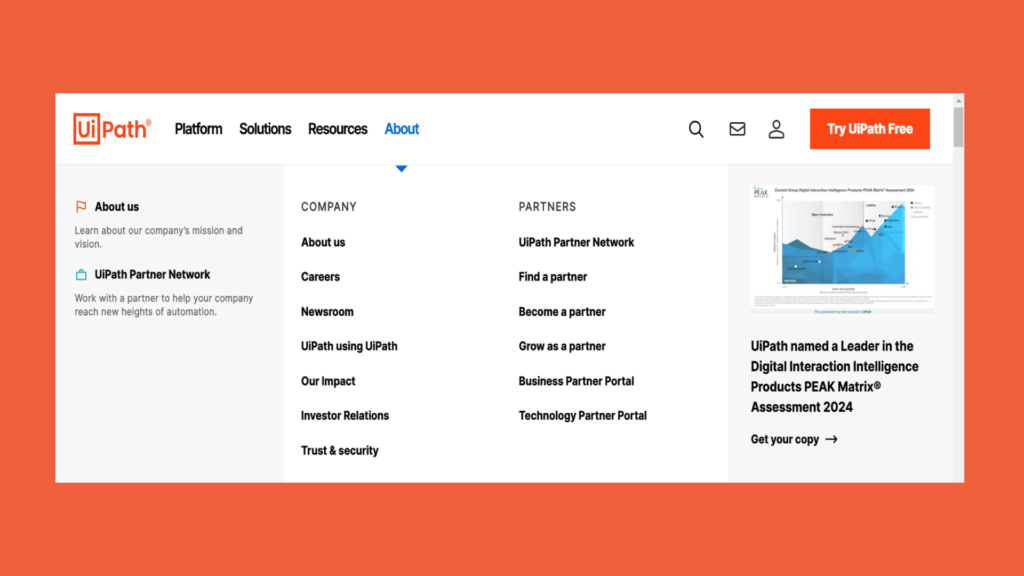Running a business can sometimes feel like an endless race against the clock. There’s always another task to handle, a customer inquiry to respond to, or a spreadsheet to update. Not to mention the invoices waiting to be processed.
These repetitive tasks often take up valuable time, making it harder to focus on the more important aspects of growing your business and driving innovation. This is where AI-powered automation steps in, taking over these time-consuming processes.
In this article, we’ll explore some of the best AI automation tools for 2024. These tools can simplify operations, automate workflows, and give your business a competitive edge.
Top AI Automation Tools to Streamline Your Business
AI automation tools are revolutionizing how businesses manage everyday tasks, helping streamline workflows and boost efficiency. Whether you’re tackling small repetitive jobs or looking to automate complex processes, there’s a tool to fit every need.
Below is a selection of top AI automation platforms designed to make your operations smoother and more productive.
Zapier
Zapier is a popular automation tool known for connecting multiple apps to create automated workflows without coding. It allows businesses to integrate various apps and automate complex processes with ease.
Use Case: Zapier works smoothly with AI tools like OpenAI’s GPT to handle customer service messages or create personalized emails based on how clients behave. With triggers and actions in place, workflows can run automatically across over 7,000 apps, making it suitable for businesses of all sizes.
Why it’s great: Zapier’s vast library of app integrations makes it easy to automate nearly any task, from simple to advanced AI-powered processes.
Pricing: Free plan available; paid plans start at $19.99/month.
Learn more about Zapier.

Make.com
Make offers powerful, customizable automation solutions, allowing users to build intricate workflows without coding. Its visual drag-and-drop interface simplifies the process of creating complex automation.
Use Case: Make shines when handling real-time tasks across multiple apps, like running customer support or analyzing data in real-time. For example, you can integrate it with AI tools like OpenAI to automate predictive data analysis, providing valuable business insights.
Why it’s great: Make’s ability to handle parallel processing means multiple data streams can run simultaneously, making it ideal for high-volume tasks like e-commerce or marketing campaigns.
Pricing: Free plan available; Pro Plan starts at $16/month, Teams Plan at $29/month, and Enterprise pricing is customized.
Learn more about Make.

UiPath
UiPath is a leading Robotic Process Automation (RPA) platform designed to automate both digital and physical processes. It supports businesses in industries that require large-scale, high-stakes automation.
Use Case: UiPath can automate entire supply chain processes in manufacturing, from tracking inventory in real-time to deploying robotic machinery on assembly lines. In healthcare, UiPath automates patient data management and can assist in robotic surgeries and pharmacy operations, reducing human error and enhancing precision.
Why it’s great: UiPath’s ability to integrate digital and physical automation makes it stand out, particularly in industries such as manufacturing, healthcare, and finance where compliance and precision are essential.
Pricing: Free plan available; custom pricing for enterprise solutions.

Microsoft Power
Microsoft Power Automate seamlessly integrates with Office 365, Dynamics 365, and other Microsoft applications, making it a perfect solution for businesses already in the Microsoft ecosystem.
Use Case: From simple tasks like data entry to complex processes like approval workflows, Power Automate handles it all. Its AI Builder can automate document processing, extracting data from PDFs, forms, and images, making it particularly useful for industries with high paperwork volumes, such as finance or legal.
Why it’s great: With pre-built templates and a low-code environment, Power Automate is accessible to non-technical users. Its AI-powered features enhance document processing, ensuring efficiency and accuracy.
Pricing: Free plan available; paid plans start at $15/month.
Learn more about Microsoft Power Automate.

Conversica
Conversica is an AI-powered sales assistant that automates both inbound and outbound sales interactions, ensuring businesses can scale their lead engagement without sacrificing the personal touch.
Use Case: Conversica excels at lead nurturing, consistently following up with leads until they’re ready to move forward. It automates emails, schedules meetings, and engages customers, freeing up human sales teams to focus on strategic tasks.
Why it’s great: Conversica mimics real conversations, making customer interactions feel personal while automating repetitive tasks. It’s particularly useful for businesses with large lead databases that need constant follow-up.
Pricing: Custom pricing based on business needs. Learn more about Conversica.
These AI automation tools each bring unique strengths to streamline your business process.es. Whether you need simple workflow automation or complex, industry-specific solutions, selecting the right tool can enhance productivity and drive business growth. Evaluate each tool based on your specific needs, and start optimizing your workflows today.

The SMART Guide to Picking the Perfect AI Automation Tools
AI automation tools are revolutionizing how businesses manage everyday tasks, helping streamline workflows and boost efficiency. Whether you’re tackling small repetitive jobs or looking to automate complex processes, there’s a tool to fit every need. Below is a selection of top AI automation platforms designed to make your operations smoother and more productive.
Choosing the right AI automation tool for your business can seem like a daunting task, but with these focused and actionable tips, you can make a more informed decision. This guide will help make sure your choice aligns with the SMART framework—Specific, Measurable, Achievable, Relevant, and Time-bound.
Tip 1: Assess Compatibility
Before choosing any AI automation tool, it’s important to check if it integrates well with your existing business software, such as your CRM, accounting systems, or other business-critical applications.
- Why It Matters: If the tool doesn’t work well with your current systems, it could slow things down or cause issues in your daily tasks.
- Actionable Step: Make a list of all the current systems you use. During the trial period of the new AI tool, verify smooth integration without needing complicated plugins or extra setup.
Tip 2: Evaluate Data Security and Privacy
Protecting your data is critical, particularly if your business handles sensitive customer information or needs to comply with regulations like GDPR or HIPAA.
- Why It Matters: A tool without strong security features might leave your business exposed to data risks or legal trouble, and that could be expensive.
- Actionable Step: Request documentation on the tool’s security protocols, including encryption practices and certifications. Make sure it complies with regulations specific to your industry.
Tip 3: Check Scalability
As your business grows, so should your automation tools. It’s key that the AI platform you choose can scale up with your company’s increasing demands.
- Why It Matters: A tool that works for a small business may not support you when your operations expand, leading to costly switches down the line.
- Actionable Step: Assess the tool’s tiered pricing plans and feature expansion capabilities. Confirm that it can handle a higher volume of work or new users as your business evolves without escalating costs disproportionately.
Tip 4: Test Usability with Your Team
Even the most advanced AI tools are useless if your team can’t use them effectively. It’s important to involve your employees in the selection process to make sure the tool is intuitive and fits into your workflow.
- Why It Matters: Tools that are overly complicated or require extensive training can lead to frustration and poor adoption among staff.
- Actionable Step: During the trial phase, ask team members to test the tool in real-life scenarios. Collect feedback on ease of use and whether the tool integrates well into their daily tasks.
Tip 5: Consider Customer Support & Resources
Good customer support can save you time and headaches when issues arise. A company that offers solid customer service and helpful resources will be a reliable partner in your automation journey.
- Why It Matters: A tool with poor support could cost you valuable time when technical problems crop up, slowing down your operations.
- Actionable Step: Test the responsiveness of the tool’s customer support during your trial period. Reach out with any questions and gauge how helpful and prompt the support team is in addressing your concerns.
Want to Make the Process Easier?
Download our SMART Checklist in PDF format to have these steps at your fingertips while evaluating different tools.
This guide will help you make a well-informed decision that fits your business’s unique needs.
Taking the Next Step: Simple to Complex AI Automation Workflows
AI technology is not just a tool for content creation—it’s a game-changer across a broad range of business functions. From basic tasks to intricate operations, AI-powered automation can significantly boost your efficiency.
Let’s break down five common automation scenarios, from simple to complex, and how they can streamline your workflows.
1. Email Follow-Ups (Simple)
AI can handle routine follow-up emails automatically, ensuring no client is missed after meetings or transactions. For instance, when a client makes a purchase or attends a meeting, an AI can send personalized follow-up emails based on their actions. This eliminates manual tracking, saving hours of work.
- Tool Example: Mailchimp or ActiveCampaign
- Why it works: Automation ensures timely follow-ups without human intervention, maintaining customer engagement and freeing up your team for more important tasks.
2. Calendar Scheduling (Intermediate) (Simple)
Scheduling meetings can become cumbersome, especially with back-and-forth emails. AI-powered scheduling tools simplify this by automatically identifying available time slots across team calendars and syncing meetings accordingly. The system can even send reminders or reschedule meetings if conflicts arise.
- Tool Example: Calendly or Microsoft Bookings
- Why it works: AI makes scheduling easy by handling the back-and-forth, saving time and helping your team stay on track.
3. Inbound Sales Automation (Intermediate)
Instead of manually sifting through sales leads, AI can sort and prioritize inbound leads, determining which ones are ready for a sales pitch. Tools like Conversica interact with leads, engaging them until they are ready for human follow-up, saving sales teams valuable time.
- Tool Example: Conversica
- Why it works: AI identifies sales-ready leads while nurturing those not yet ready, allowing human sales teams to focus on closing deals with high-potential prospects.
4. Customer Support Chatbots (Advanced)
Handling a flood of customer inquiries can strain resources. AI chatbots provide a scalable solution by answering common customer questions instantly. These bots can also escalate more complex queries to human agents, ensuring that all customer inquiries are handled efficiently.
- Tool Example: Zendesk or Ada
- Why it works: Chatbots enable businesses to provide 24/7 customer support, automating responses to common questions and reserving human agents for more complex cases.
5. Predictive Analytics (Complex)
Predictive analytics tools use AI to analyze large datasets, forecasting trends based on historical data. This can guide decisions on areas such as marketing campaigns, inventory management, and customer behavior. By anticipating future trends, businesses can optimize operations and better plan for growth.
- Tool Example: Tableau with AI integration or Microsoft Power BI
- Why it works: Predictive analytics allows businesses to make data-driven decisions, reducing risks and improving efficiency in future planning.
These five automation scenarios illustrate how AI can transform various aspects of your business. Whether you start with simple email automation or dive into advanced predictive analytics, AI tools help streamline your processes, enabling you to focus on growth. Explore these tools, find the right fit for your needs, and watch your business efficiency soar.
Moving Forward with Confidence
Ready to take your automation journey further?
Start with small steps like email automation or calendar scheduling, then move toward more complex workflows as you gain confidence. Not sure where to start?
Grab our SMART Checklist to guide you, or set up a free process audit with our team to get personalized advice.
Automating these tasks not only saves time but also ensures that your business operates more smoothly and efficiently.





